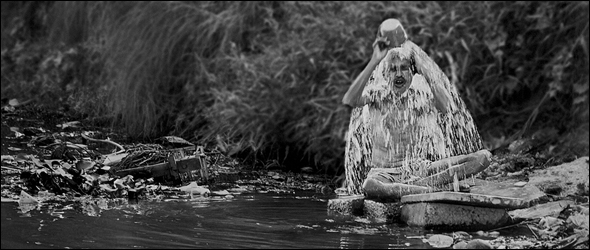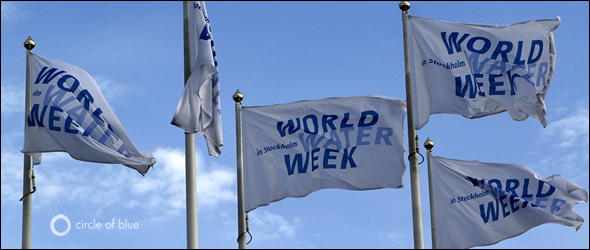Posts

Racing an Arizona Senator’s Retirement, Dry Navajo Nation Draws Closer to Securing More Water
2 Comments
/
The largest reservation in the U.S. has one of the nation's highest poverty rates — more than 40 percent — and very little water infrastructure. Many residents pay nearly 50 times the municipal cost for water, which instead is delivered from a tank in the back of a truck, often resulting in water-borne intestinal illnesses.

Unprescribed: Legislation to Keep Drugs Out of Water Thwarted by U.S. Pharmaceutical Lobbying
An estimated 10 to 40 percent of prescription and over-the-counter medicines are not used, but how to properly dispose of these drugs depends on who you ask. Since there is no continuous national program, states — and even some cites — are instituting their own regulations, but not without complaints from the pharmaceutical industry.

Plumbing WikiLeaks: Saudi Arabia Fears Iranian Nuclear Meltdown and Potential Terrorism to Desalination
Classified cables show that Saudi and U.S. officials believe water supplies along the Persian Gulf are at high-risk for terrorist attacks and possible contamination from nearby nuclear plants. This is the first of a new series that will analyze the water-related U.S. embassy cables published by WikiLeaks.

Q&A: Dr. Peter Gleick on The World’s Water Volume 7
Peter Gleick, an internationally recognized water expert, tells Circle of Blue what has changed — and what has not — since the 2009 release of Volume 6. The Pacific Institute's biannual report analyzes how water relates to climate change, corporate interests, and policy reform.

Mixing Art and Technology: North America’s Largest Membrane-filtration Sewage Plant Opens Near Seattle
The $1.8 billion Brightwater facility, 10 miles northeast of Seattle, eschews old notions of what a sewage plant is. State-of-the-art membrane technology produces reusable water, a trail system allows outdoor recreation, and wetlands give salmon a place to spawn.

Building China’s 21st-century Megacity: Shanghai’s Experiment with Water and Nature
A new community on the Yangtze River has, so far, been more successful at attracting ducks than people. But city officials have their sights set high for Lingang Port City, which they say could be home to nearly a million people by 2050. Cleaner water will be a big help.

James Workman: My Local Wants vs. Their Global Needs — UN Water Forum Hints at Tensions of Competing Agendas
Heavy hitters in the water world met at the United Nations headquarters in New York City on September 16 for a public-awareness marketing campaign. But who is the target audience? And what message do they need to hear?

Ned Breslin: Building Momentum — Is Self-starter the New Self-sufficient?
Every time I see Mayor Mendoza, I am greeted by his warm smile…

Photo Slideshow and Q&A: Om Prakash Singh Documents the Perception and Harsh Realities of Water and Sanitation in Delhi, India
Delhi reportedly has a high percentage of coverage for sanitation and water supply. But one photographer has 74,000 images spanning the last 10 years that challenge the perception of progress

Stockholm World Water Week 2011: Megacities, Human Rights, Sanitation, Tech Tools, Energy, and Food
2,600 global experts. 100 sessions. Seven days. One issue: water.

Q & A: Charles Fishman on The Big Thirst
Our guest today is Charles Fishman, an award winning investigative journalist and author of the best selling book "The Wal-Mart Effect." We caught up with Fishman during his tour for "The Big Thirst," his latest book focusing on water issues around the world.

Supreme Court Ruling Tests Boundaries of Water Supply and Energy Production Along Montana-Wyoming Border
Montana and Wyoming have taken their transboundary water dispute to the Supreme Court. Wyoming won the first round. But others await in a case that will help decide how much water is really available to generate energy and to produce food in one of the nation’s driest regions, as well as who has access to that water.


